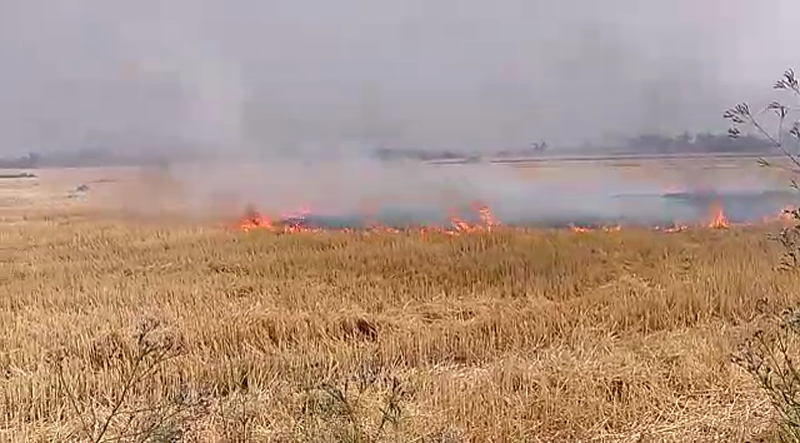Excelsior Correspondent
JAMMU, Apr 29: Crop residue burning by the farmers is spreading more frequently here today.
Wheat stubble burning is a relatively new issue which started with mechanised harvesting using combine harvesters. The farmers in RS Pura, Arnia and its adjoining areas have been burning wheat stubble at a large scale. However, the Government officials are not paying attention toward this.
Burning crop residue is a crime. However, Government’s implementation lacks strength.
Although the actual amount of fine charged was not available; the farmers continue to burn residues every season thus making both the soil and air poisonous.
In addition to wheat and paddy, sugarcane leaves are most commonly burnt.
Instead of burning of the stubble, it can be used in different ways like cattle feed, compost manure, roofing in rural areas, biomass energy, mushroom cultivation, packing materials, fuel, paper, bio-ethanol and industrial production, etc.
A crop residue burning releases tonnes of carbon dioxide, carbon monoxide, oxides of sulphur, tonnes of particulate matter and black carbon. These directly contribute to environmental pollution, and are also responsible for the haze.
The heat from burning paddy straw elevates the temperature. This kills the bacterial and fungal populations critical for a fertile soil.
Burning of crop residue causes damage to other micro-organisms present in the upper layer of the soil as well as its organic quality. Due to the loss of ‘friendly’ pests, the wrath of ‘enemy’ pests has increased and as a result, crops are more prone to diseases.


